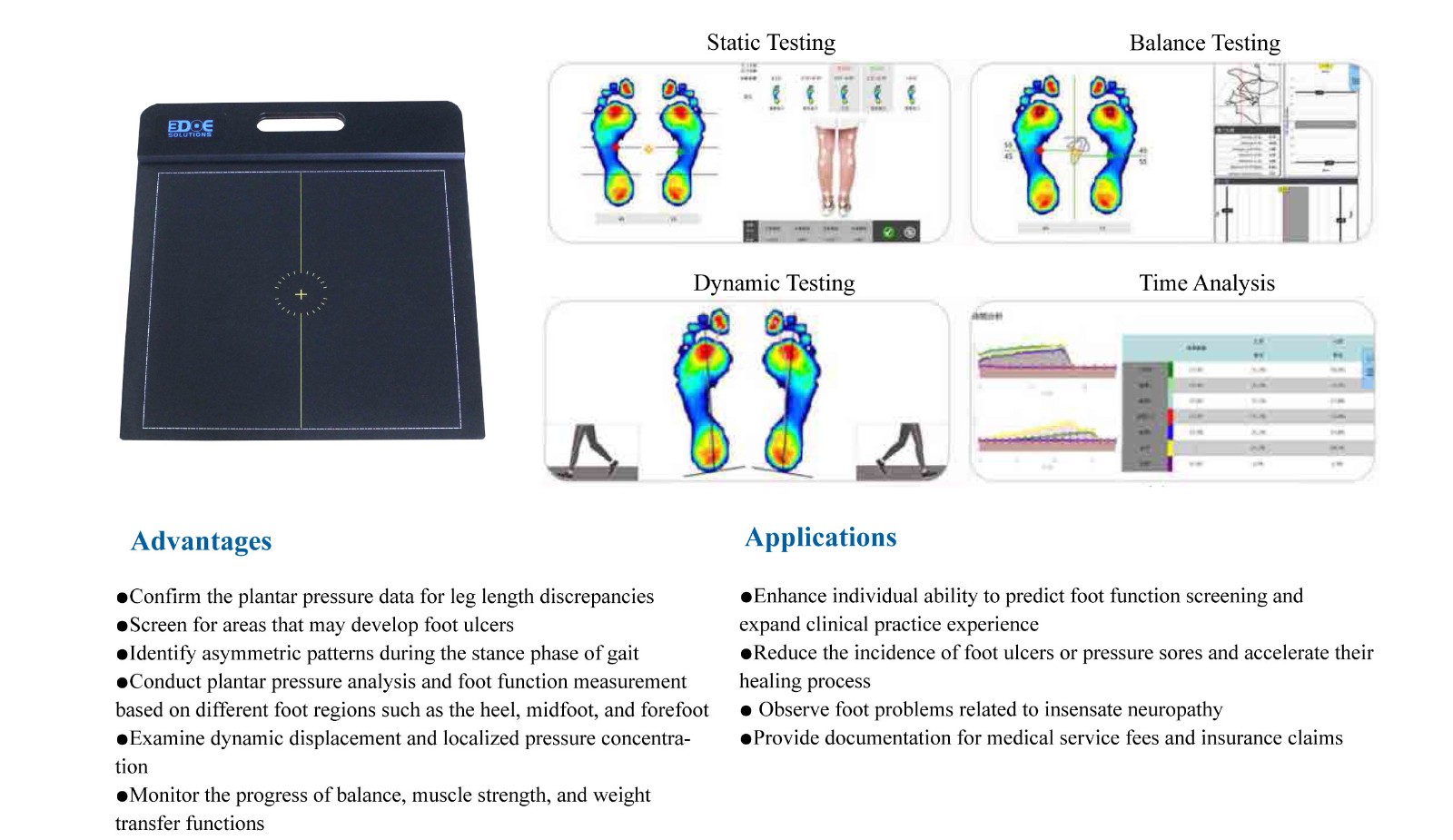The sampling frequency significantly affects the detail and dynamic accuracy of plantar pressure distribution heatmaps, especially during dynamic gait analysis.
Although static heatmaps are less affected by sampling frequency, during walking or running, the sampling rate directly determines whether the heatmap can truly and completely reflect the entire process of pressure changes.
Specific impacts are as follows:
1. Determines Temporal Resolution of the Heatmap
The higher the sampling frequency, the more pressure frames are collected per unit time, resulting in a smoother and more continuous sequence of heatmaps.
Low Sampling Frequency (e.g., 50 Hz):
Records only 50 pressure frames per second. During fast walking or running, it may miss the peak impact at heel strike or the pressure transfer process during forefoot push-off. This can cause the heatmap sequence to appear "jumpy" or "fragmented," failing to accurately reconstruct gait details.High Sampling Frequency (e.g., 300 Hz and above):
Captures over 300 frames per second, continuously recording every subtle change as the foot contacts, loads, and leaves the ground. This produces smoother, more realistic heatmap sequences, clearly showing the dynamic process of how pressure transfers from the heel to the forefoot.
2. Affects Accuracy in Capturing Peak Pressure
The maximum plantar pressure (e.g., heel impact force) often occurs within a very short time (tens of milliseconds).
If the sampling frequency is too low, the system may miss the exact moment of peak pressure, causing the displayed "maximum pressure" on the heatmap to be lower than the actual value—appearing yellow or orange instead of red.
A higher sampling frequency precisely captures these transient high-pressure points, ensuring the location and intensity of high-pressure zones (red areas) on the heatmap are accurate and reliable.
3. Influences Gait Phase Segmentation Accuracy
Heatmaps are commonly used to divide the gait cycle (e.g., stance phase, swing phase). Low-frequency sampling may result in:
Inaccurate identification of contact and lift-off moments.
Ambiguous gait phase segmentation, affecting the analysis of the Center of Pressure (COP) trajectory.
High-frequency sampling provides more precise time markers, enabling better synchronization between the heatmap and gait events.
4. Minimal Impact on Static Heatmaps
When a subject is standing still, plantar pressure remains relatively stable with minimal change. In such cases, even a lower sampling frequency (e.g., 50 Hz) can generate an accurate pressure distribution heatmap, as the pressure pattern does not change drastically over short periods.
| Scenario | Impact of Sampling Frequency |
|---|---|
| Static Standing Heatmap | Minimal impact; 50–100 Hz is sufficient |
Prev: How does the scanning speed of a 3D foot scanner affect data accuracy? Next:Is a higher sampling frequency always better for a plantar pressure analysis system?
 Back to list Back to list
Related newsOnline messageX
|

 +86-0755-86131192
+86-0755-86131192 2025-09-17
2025-09-17








 +86-0755-86131192
+86-0755-86131192